|

1. Clypeus
irregularly emarginate, with a median notch (A); mandibles
unidentate (B); genae strongly swollen (A, B, C); gastrocoeli
obsolete (C); propodeum lacking distinct carinae (C) ...Nesostenodontus
Cushman, 1922 (Ichneumonini)

– Clypeus
either lenticular (e.g., Figs. 4B, 21B, 23B) or squared (a), never
irregularly emarginated or with a median notch; mandibles either
bidentate (b) or unidentate (Figs. 11C, 14B); genae various, usually
not as strongly inflated (e.g., Figs. 6C, 19A, 25A); gastrocoeli and
thyridia various, from obsolete (Fig. 14C) to distinctly present (c,
Fig. 26B); propodeum with either distinct (c, Fig. 23C), partial
(Fig. 6B) or indistinct carinae (Fig. 19B) ...2 (Phaeogenini)

2(1)
Mandibles unidentate, falcate (A, B) ...3
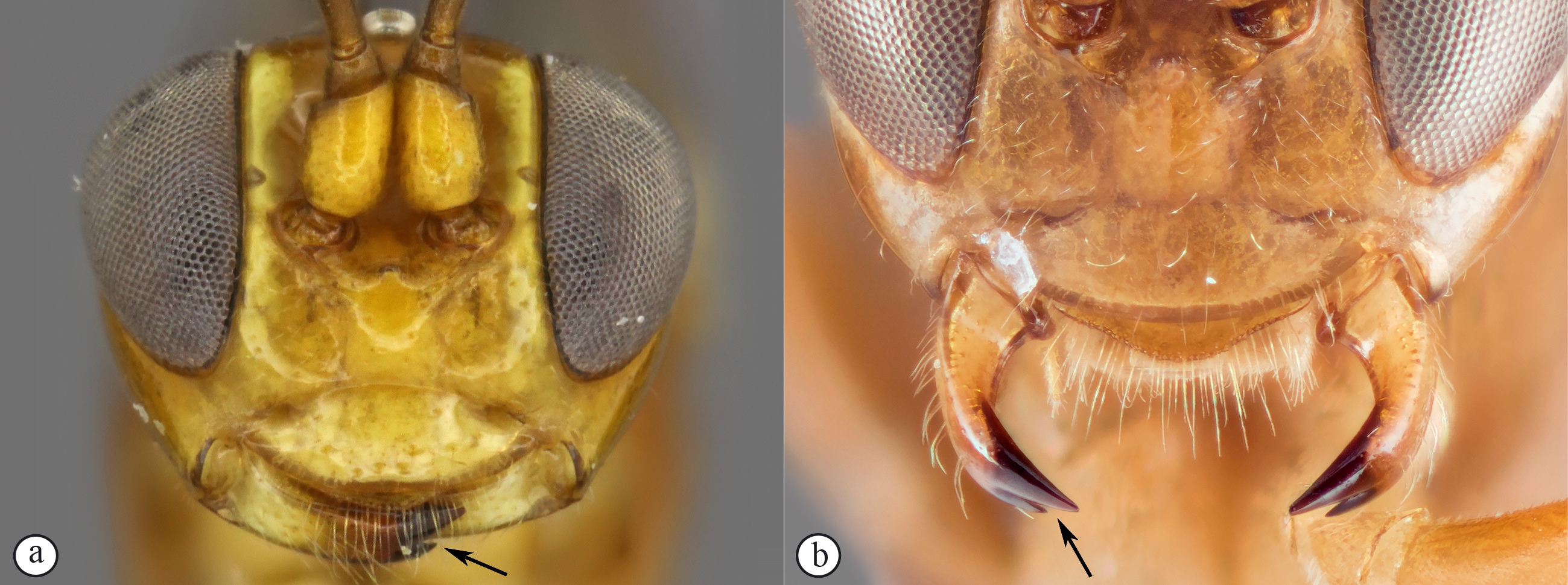
–
Mandibles bidentate, shape various (a, b) ...4

3(2)
Areolet open, 3rs–m absent (A); hind wing with distal abscissa of CU
absent (B) ...Lusius
Tosquinet, 1903
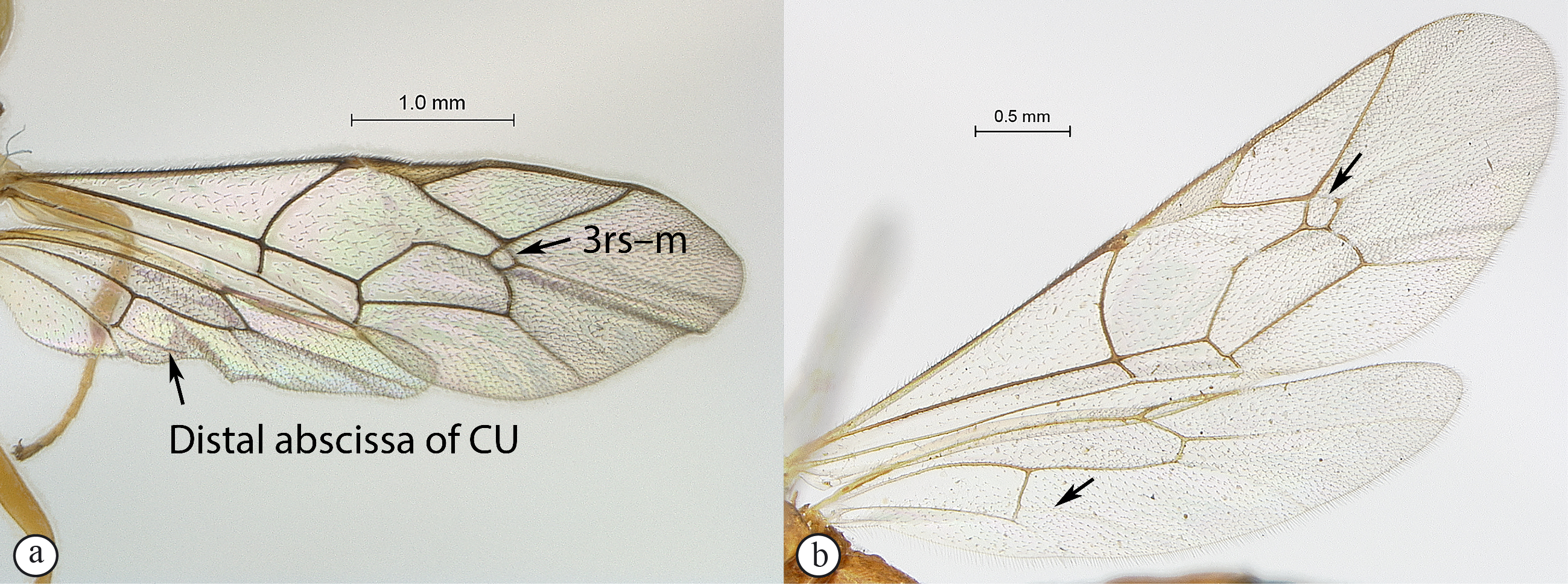
– Areolet
closed, 3rs–m present (a), sometimes non–tubular (b); hind wing with
distal abscissa of CU present (a), sometimes very faint (b) ...Heterischnus
Wesmael, 1859
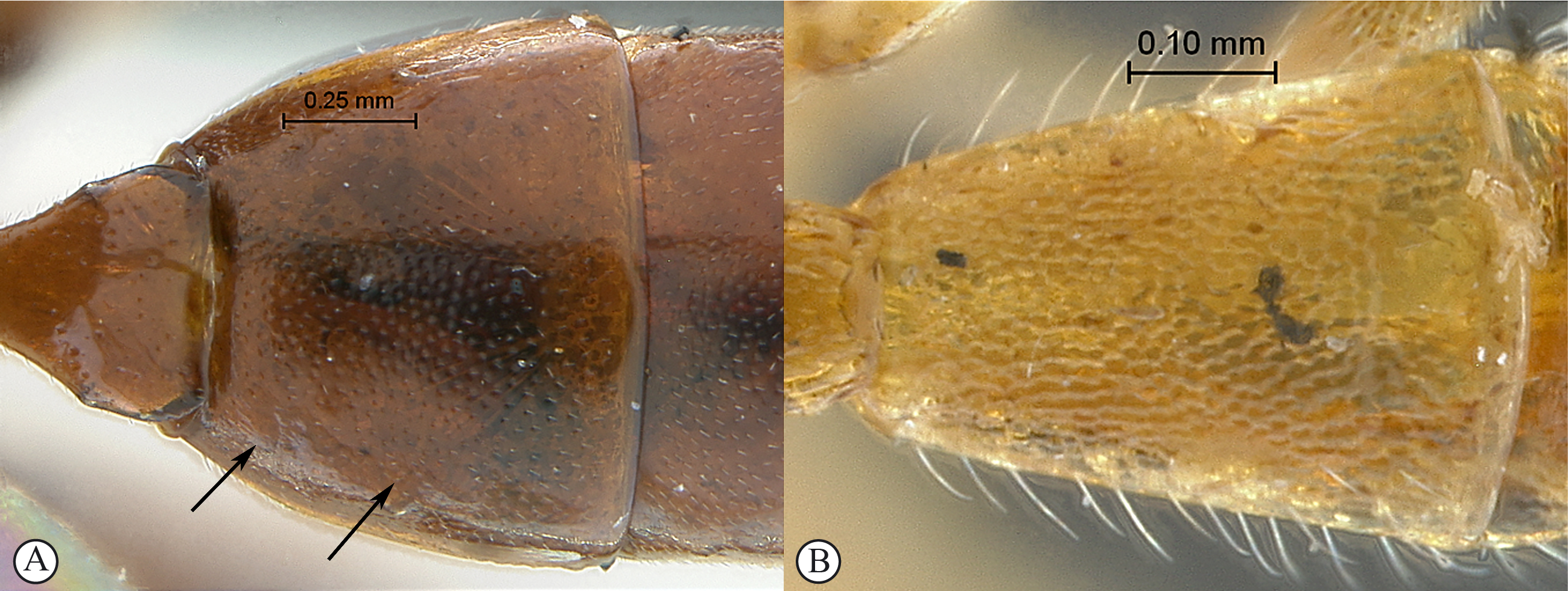
4(1)
Metasomal tergite 2 with gastrocoeli and thyridia totally absent (A,
B) ...5
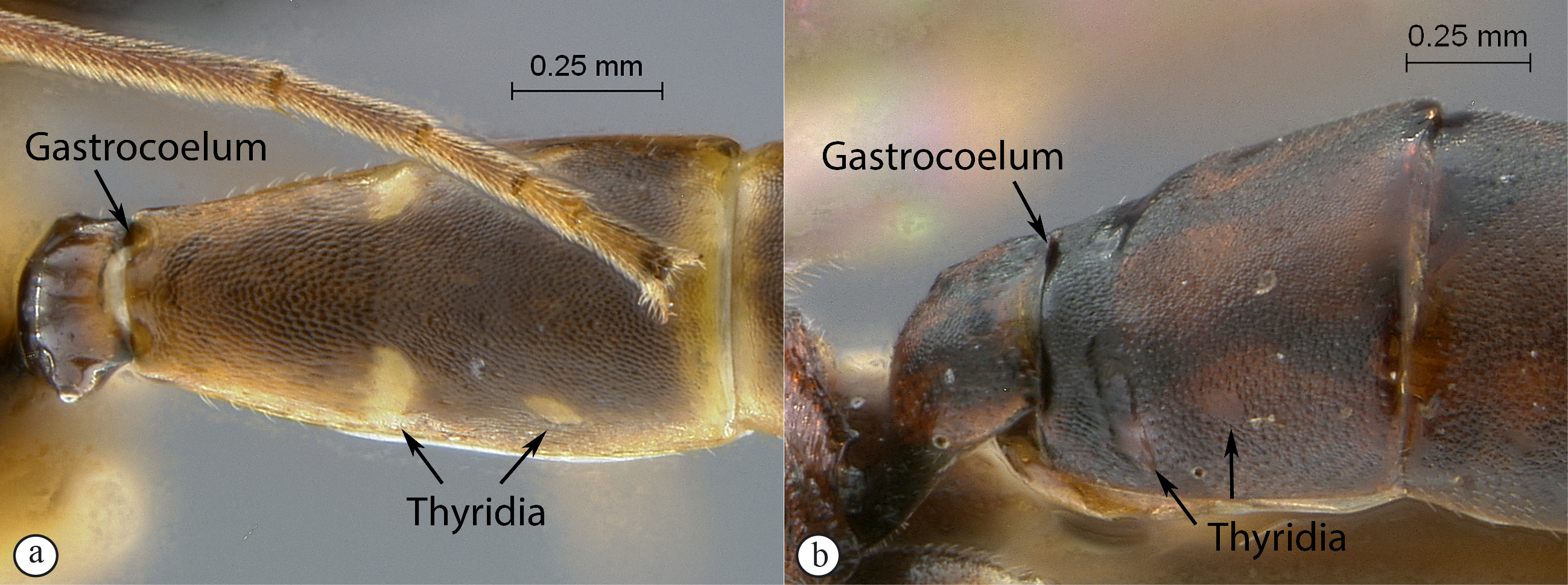
– Metasomal tergite 2 with gastrocoeli (G) present, faint to deep,
and thyridia (T) differentiated (a, b) 8
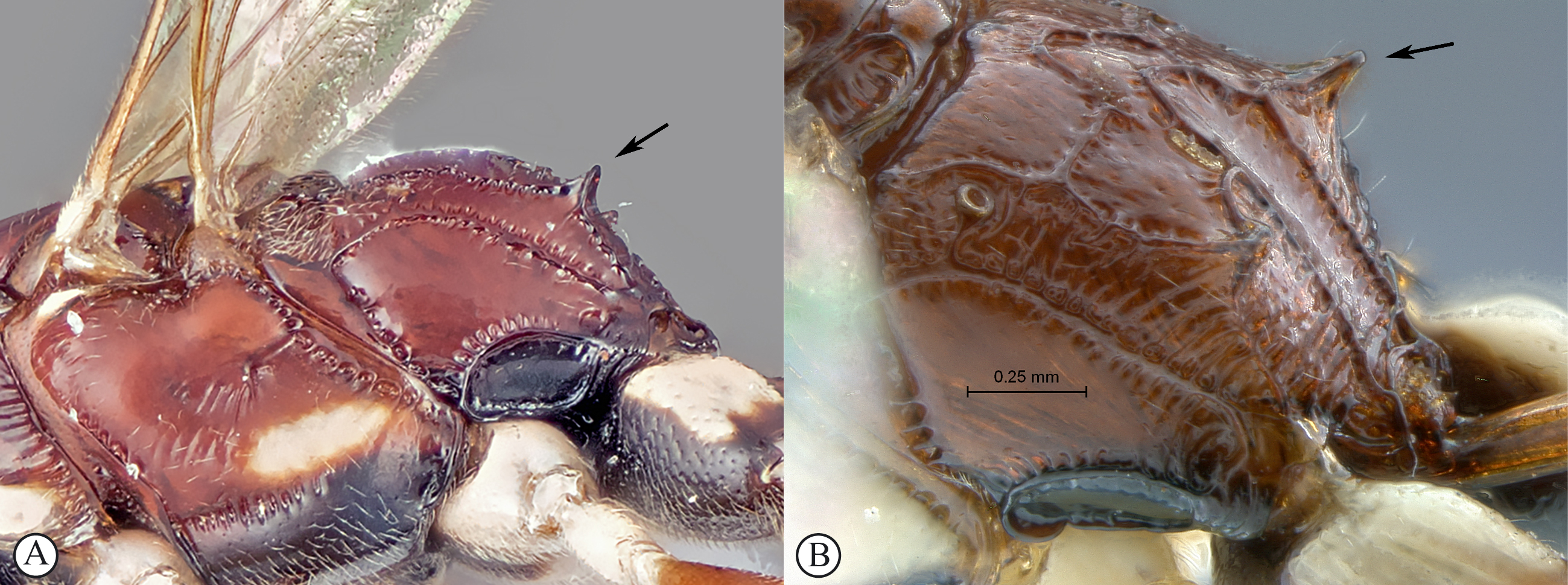
5(4) Propodeal apophyses strong, spine–like, at least as long as
basally wide (A, B) ...Hoplophaeogenes Heinrich, 1938
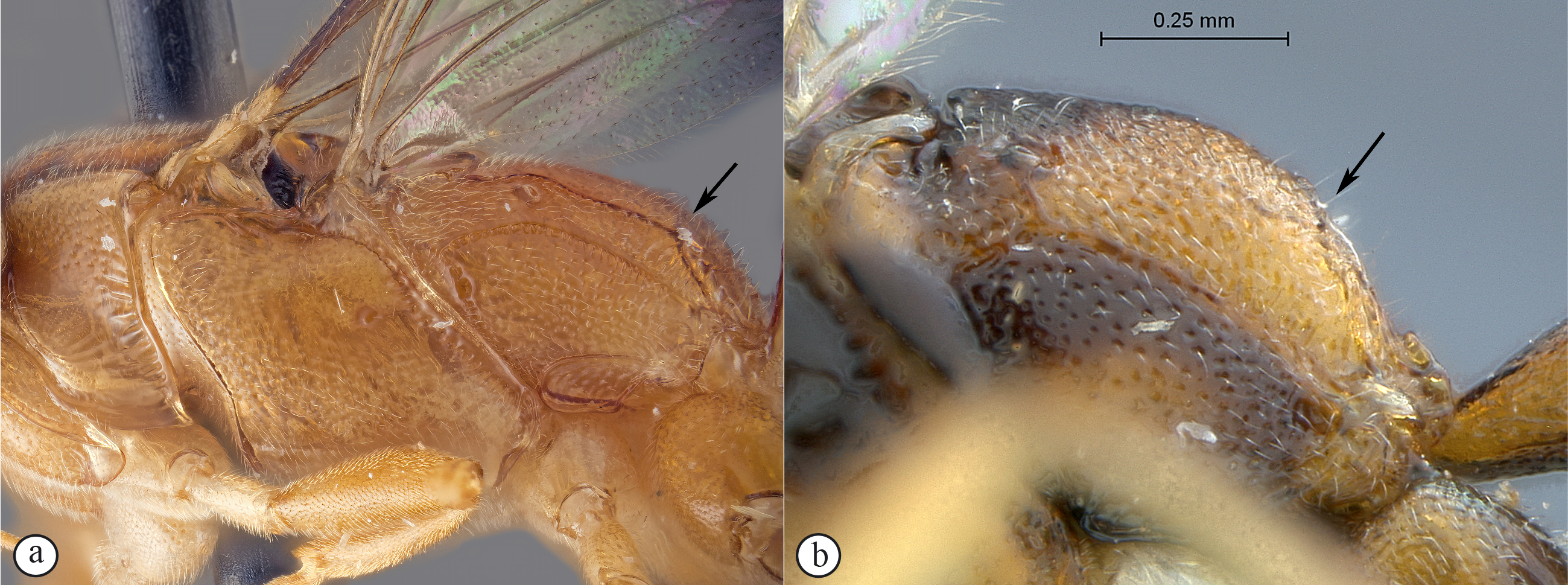
– Propodeum without spine–like apophyses, or apophyses hardly
distinct (a, b) ...6

6(5) Sternaulus deep and long, reaching beyond mid–length of
mesopleuron (A); areolet open, 3rs–m absent (B); hind wing with
distal abscissa of CU absent (B) ...Arearia Seyrig, 1952
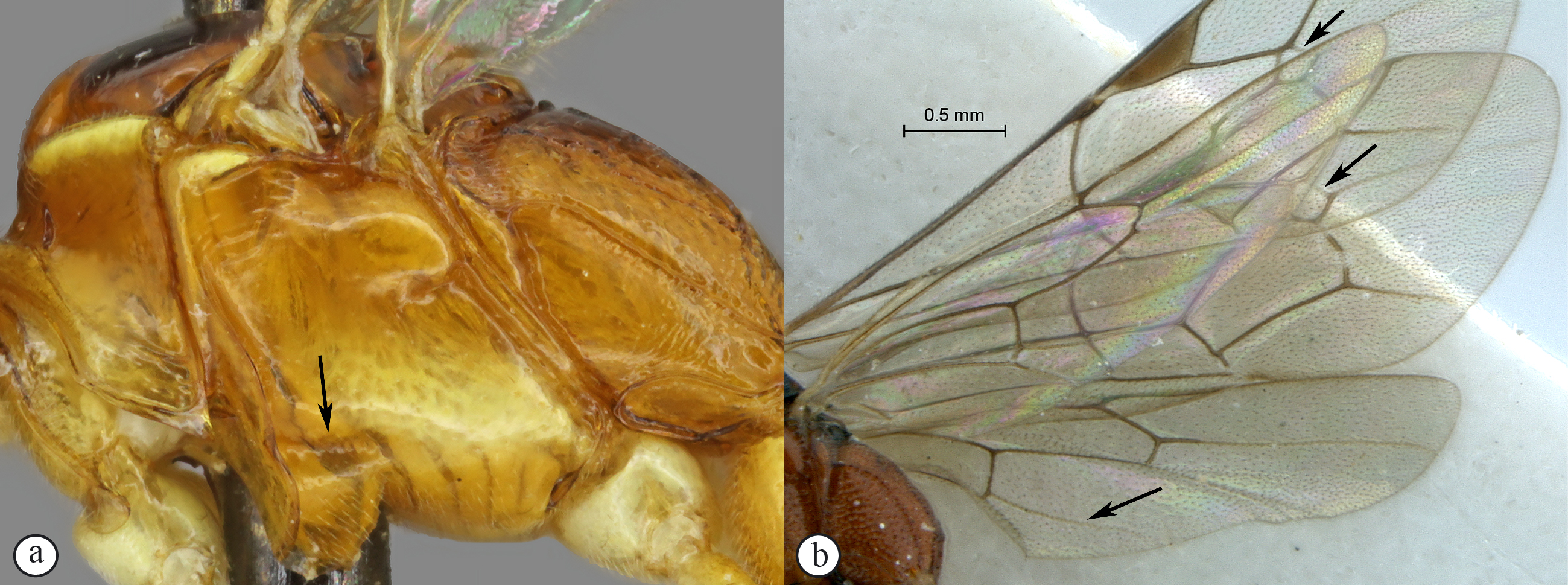
– Sternaulus absent or at least much weaker and shorter (a); areolet
closed, 3rs–m present (b); hind wing with distal abscissa of CU
present (b), sometimes non pigmented ...7
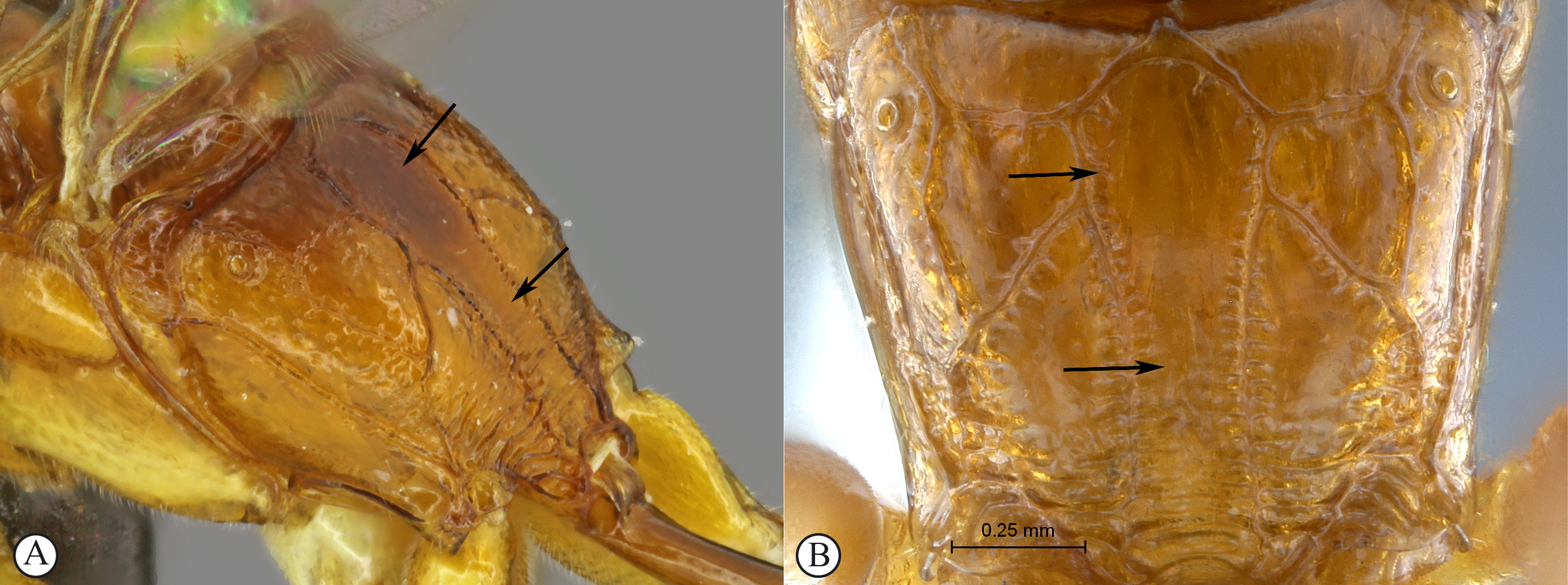
7(6) Propodeum smooth, unsculptured (at least anteriorly) with
median areas fused into one single mid–longitudinal area (A, B) ...Chauvinia Heinrich, 1938
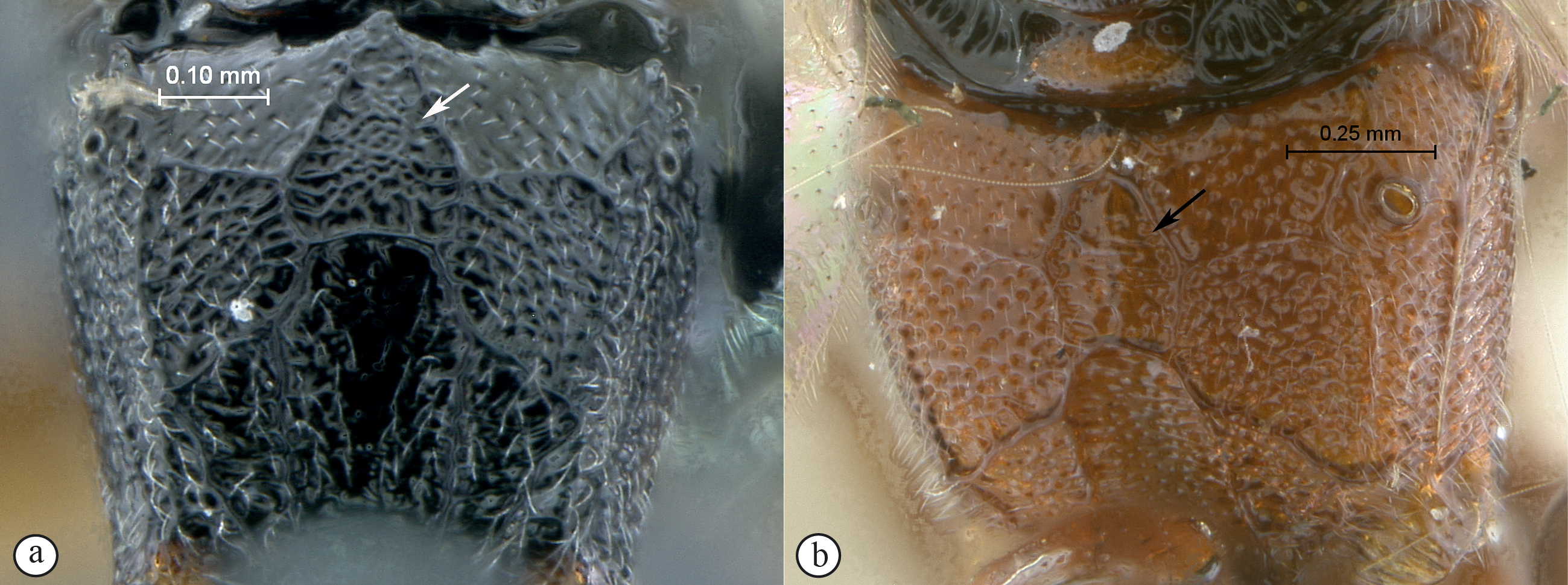
– Propodeum punctate, or coarsely sculptured with area superomedia
delimited (a, b) ...Dicaelotus Wesmael, 1845
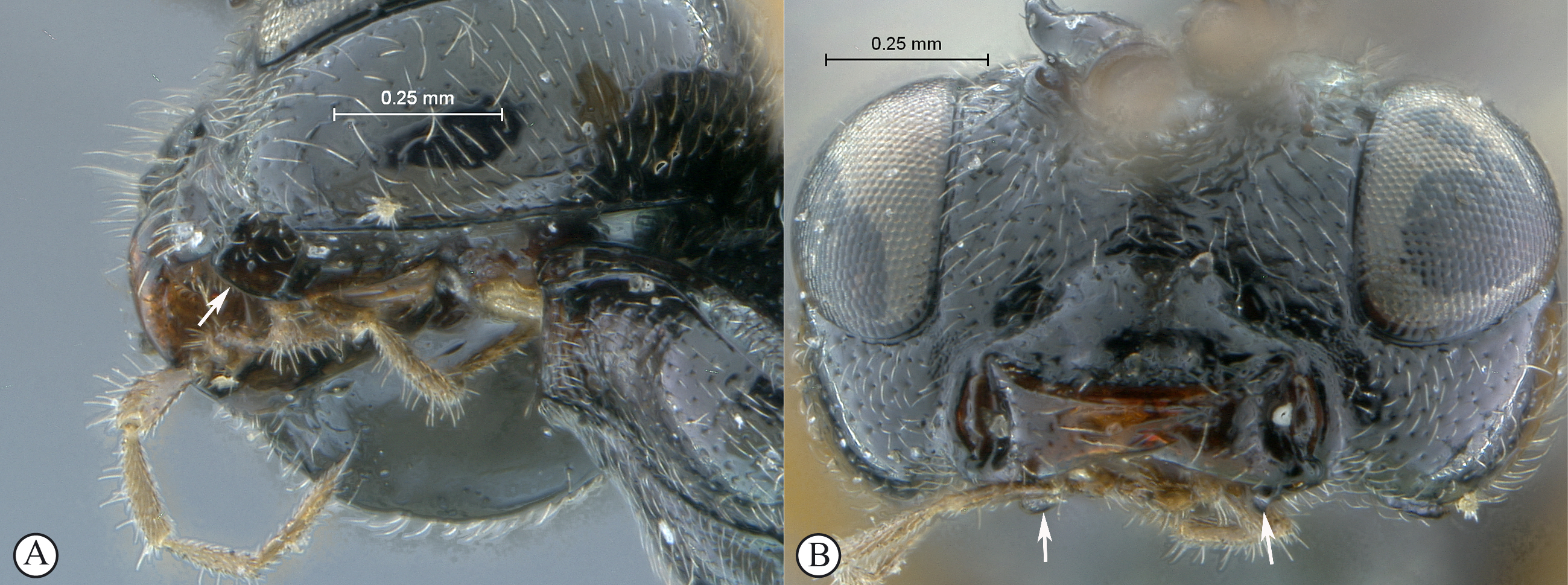
8(4) Hypostomal carina in female elevated into a flange and strongly
curved or bent at its apex to join the ventral base of the mandible
(A, B); in males, the ventral part of the genae strongly excavate
...Aethecerus Wesmael, 1845
(single species in the Afrotropical region:
A. foveolatus Gregor, 1940)
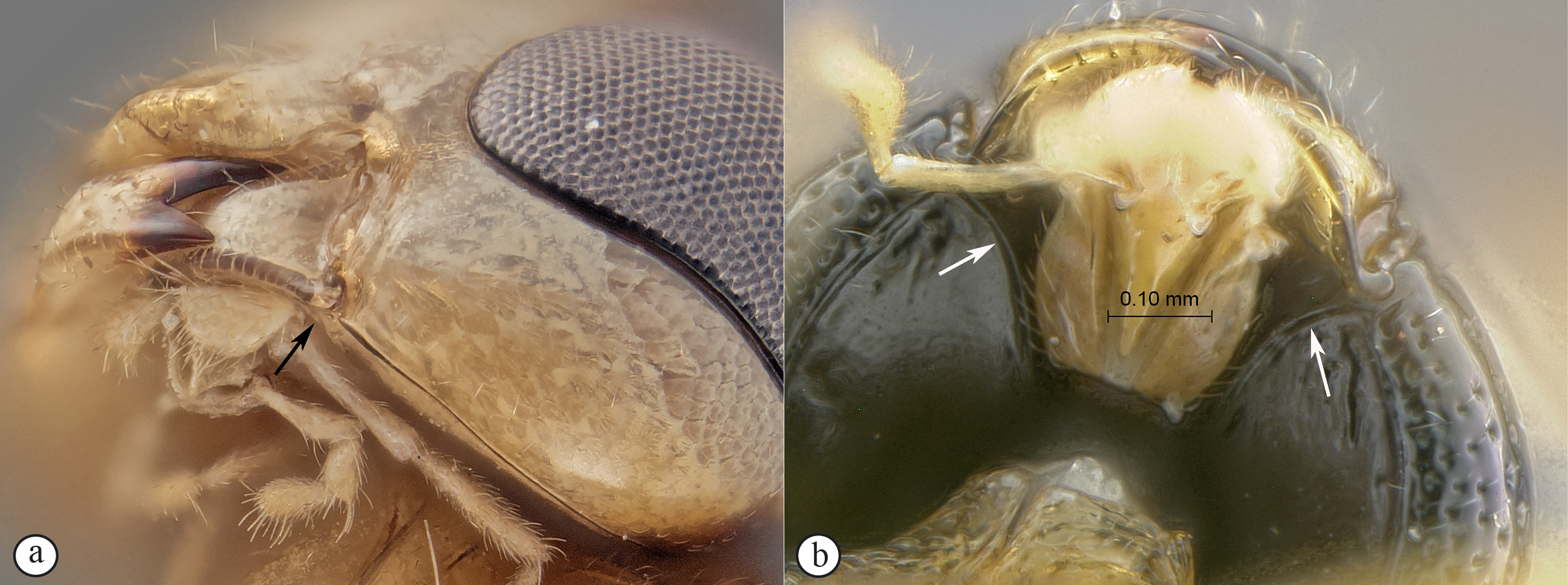
– Hypostomal carina in female normal, not elevated into a flange nor
strongly curved or bent (a, b); in males, the ventral part of genae
not strongly excavate ...9

9(8) Hypostomal and occipital carinae joining distinctly above
mandibular base (A); posterior transverse carina ventrally widely
interrupted in front of mid coxae (B); face short and transverse
with a strong mid–longitudinal bulge, laterally limited by grooves
(C) ...Tycherus Förster, 1869

– Hypostomal and occipital carinae joining at mandibular base (a);
posterior transverse carina complete (b); face quadrate without
distinct mid–longitudinal bulge (c) ...10
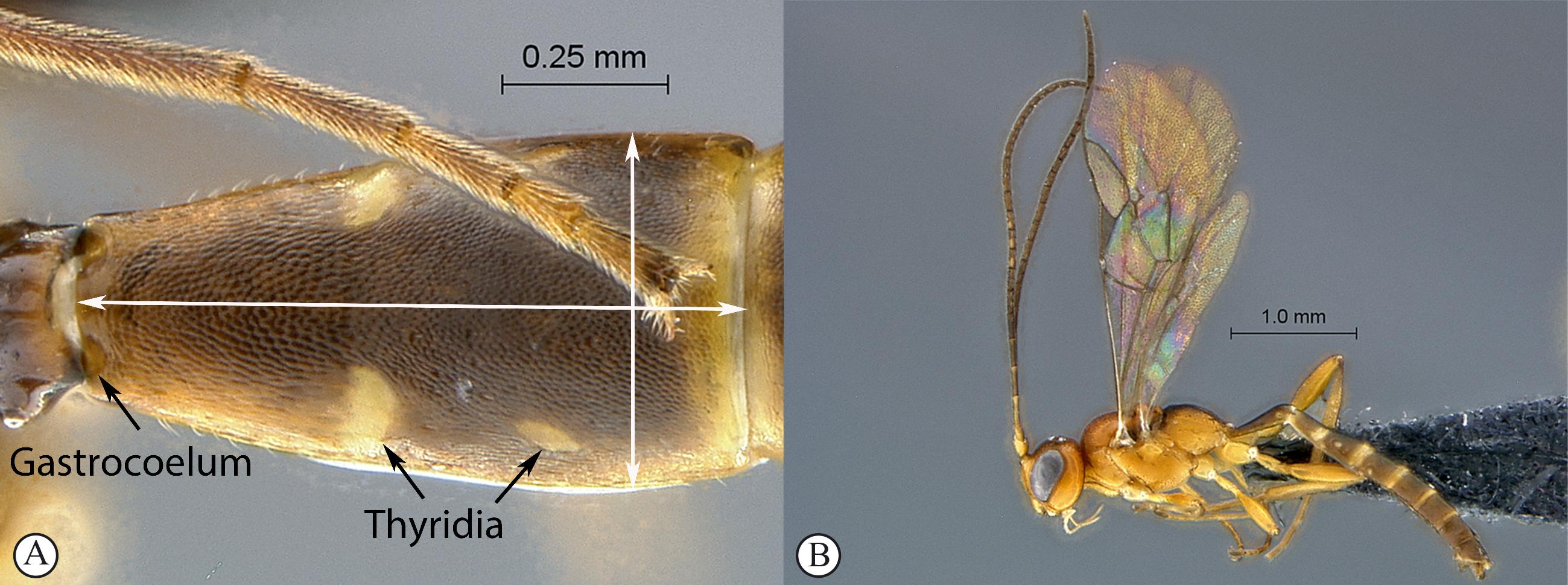
10(9) Metasomal tergite 2 elongate, more than 2× longer than
apically wide (A); gastrocoeli very shallow (A), thyridia shallow
and lighter than remainder of tergite (A); flagellum slender, longer
than fore wing (B) ...Kibalus Rousse, van Noort & Diller, 2013

– Metasomal tergite 2 stout, less than 1.5× longer than apically
wide (a); gastrocoeli either strongly marked or shallow (a),
thyridia strongly marked and concolorous with remainder of tergite
(a); flagellum shorter or as long as fore wing (b) ...11

11(10) Clypeus not distinctly separated from face (epistomal sulcus
obsolete) (A); median field of face indistinct (A); malar space
long, >0.5× the base of mandible (A); gastrocoeli thyridia deep
strongly marked (B); hind coxa of female without a longitudinal
carina/tooth on the ventral side (C) ...Diadromus Wesmael, 1845
(single species in the Afrotropical region:
D. collaris (Gravenhorst,
1829)

– Clypeus well separated from face (epistomal sulcus distinct) a);
median field of face distinct and protruding, delimited by carinae
(a); malar space short, <0.5× the base of mandible (a); gastrocoeli
thyridia shallow (b); hind coxa of female with a longitudinal
carina/tooth on the ventral side (c) ...Centeterichneumon Heinrich, 1938
|